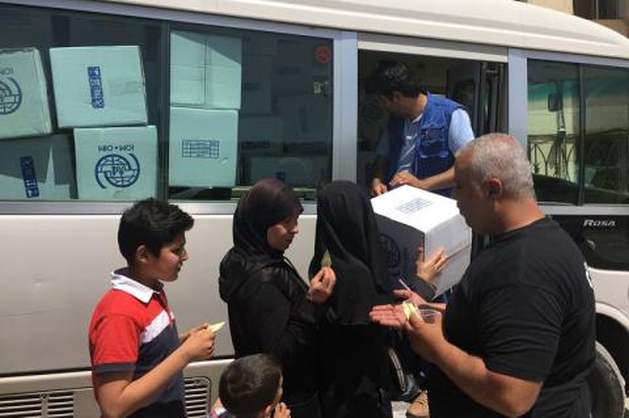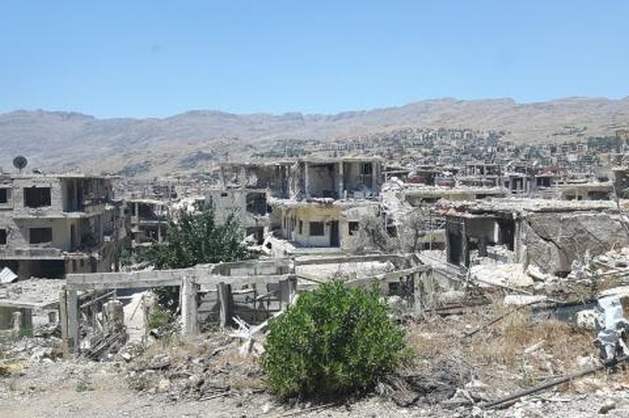One in 10 Displaced Syrians Returned Home

ROME/GENEVA, Aug 14 (IPS) - This year alone, between January and July, 602,759 displaced Syrians returned home, according to reports from the UN Migration Agency and implementing partners on the ground. Around 6 million Syrians currently remain displaced within their own country.
Findings indicate that the vast majority of people returning (84 per cent) had been displaced within Syria, the Geneva-based UN International Organization for Migration (IOM) reported.
The next highest number of people (16 per cent) returned from Turkey, followed by Lebanon, Jordan and Iraq, it added. Those from Turkey and Jordan reportedly returned mainly to Aleppo and Al Hasakeh Governorates.
An estimated 27 per cent of the returnees stated that they did so to protect their assets or properties and 25 per cent referred to the improved economic situation in their area of origin.
Other factors people gave IOM and partners as their reasons for returning included the worsening economic situation in the place where they were seeking refuge (14 per cent), social or cultural issues such as tribal links, political affiliations or any obstacle preventing integration in their area of displacement (11 per cent), and the improvement of the security situation in their area of return (11 per cent).
Aleppo, Main Destination of Returnees
Half of all returnees in 2016 were to Aleppo Governorate, said IOM.
The report shows that similar trends have been observed in 2017. Consequently, an estimated 67 per cent of the returnees returned to Aleppo Governorate (405,420 individuals), 27,620 to Idleb Governorate, and 75,209 to Hama Governorate, 45,300 to Ar-Raqqa Governorate, 21,346 to Rural Damascus and 27,861 to other governorates.
Within the Governorates mentioned, Aleppo city, received the most returnees, followed by Al Bab sub-district in Aleppo Governorate, Hama sub-district in Hama Governorate, Menbij sub-district in the northeast of Aleppo Governorate, and Al-Khafsa sub-district also in Aleppo Governorate, the UN specialised body reported.
According to reports, almost all (97 per cent) returned to their own house, 1.8 per cent are living with hosts, 1.4 per cent in abandoned houses, 0.14 per cent in informal settlements and 0.03 per cent in rented accommodation.

Access to Food, Household Items
Access of returnees to food and household items is 83 per cent and 80 per cent respectively. Access to water (41 per cent) and health services (39 per cent) is dangerously low as the country's infrastructure has been extremely damaged by the conflict.
The report indicates that an increasing number of Syrians displaced within the country appear to be returning home, informed IOM, adding that the total figure by end of July this year was already close to the 685,662 returnees identified in the whole of 2016.
However, of those returnees, an estimated 20,752 and 21,045 were displaced again in 2016 and 2017 respectively. This means that around 10 per cent of those who returned ended up as internally displaced persons (IDPs) once again.
Six Million Displaced Within Syria
While trends of returnees increase, Syria continues to witness high rates of displacement. From January to July 2017, an estimated 808,661 people were displaced; many for the second or third time, and over 6 million in total currently remain displaced within the country. This makes up to 1 in 3 inhabitants.
The figure is particularly relevant in view of the fact that the Syrian population is estimated to be slightly more than 21 million, i.e. one in three Syrians are still displaced.
IDP returns have mainly been spontaneous but not necessarily voluntary, safe or sustainable. As such, they cannot, at present, be considered within the context of a durable solutions framework.
These data have been collected by IOM's implementing partners, who use a set of tools and methods to identify, assess and monitor different population categories throughout Syria, in relation to needs and mobility dynamics at a community level.
According to IOM's Progressive Resolution of Displacement Situations, the number and scale of crises are forcing record numbers of people to flee their homes seeking relative safety within or across international borders.
"However, the growing complexity and unpredictability of these crises is resulting in increasingly protracted displacement situations which challenge the versatility of the three traditional durable solutions – voluntary return and sustainable reintegration, sustainable settlement elsewhere and sustainable local integration."
Over 4.5 Million Syrians in Hard-to-Reach Areas
According to the United Nations Refugee agencyUNHCR's estimates, there are 6.3 million internally displaced persons in Syria, while 4.53 million people are in hard-to-reach and besieged areas.
UNHCR reported that over 5 million people have fled Syria since 2011, seeking safety in Lebanon, Turkey, Jordan and beyond. Millions more are displaced inside Syria and, as war continues, hope is fading fast.
It also estimates that 13.5 million people are in humanitarian need in Syria.
© Inter Press Service (2017) — All Rights Reserved. Original source: Inter Press Service
 Global Issues
Global Issues